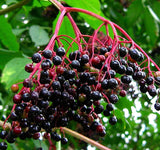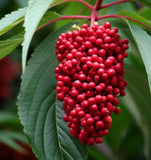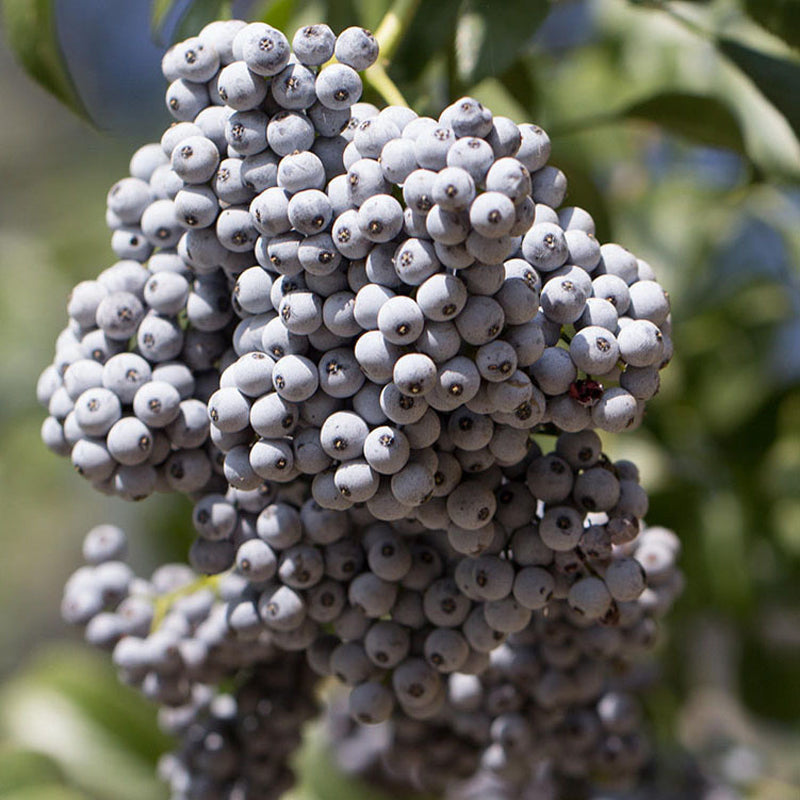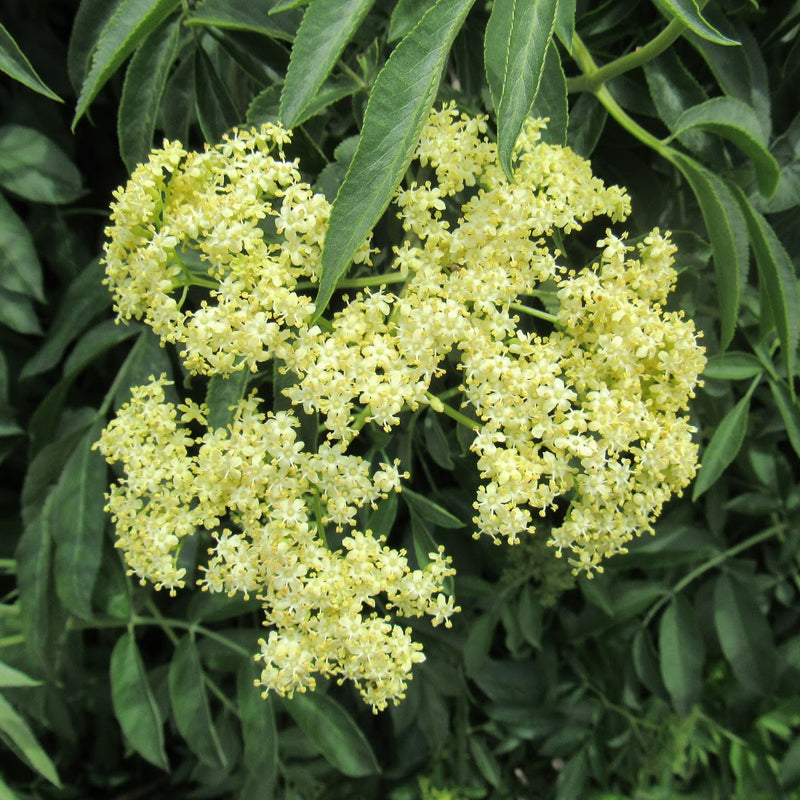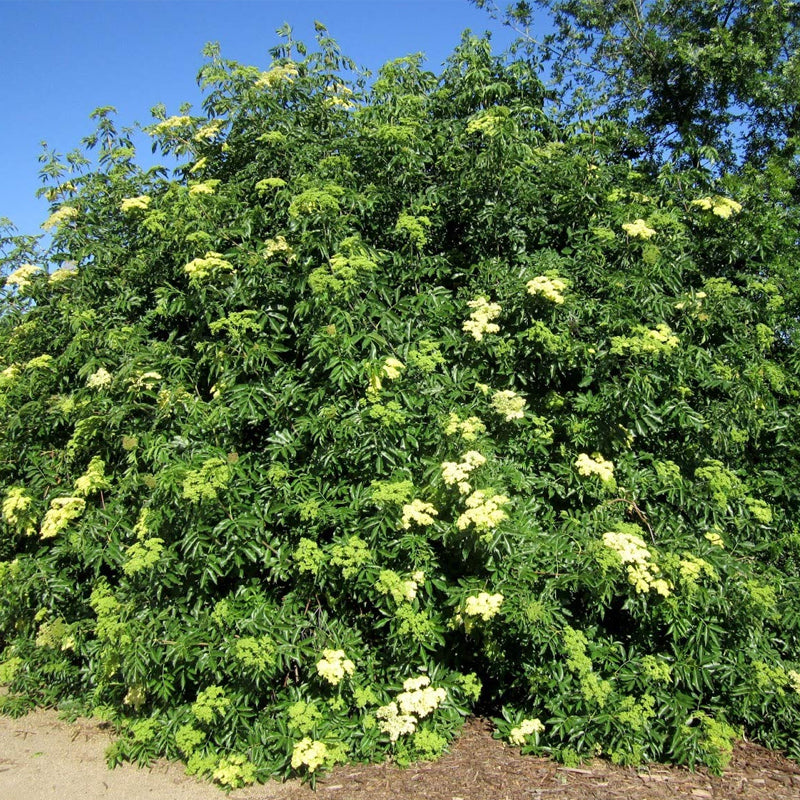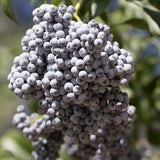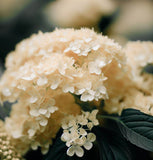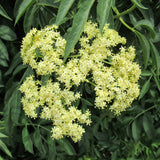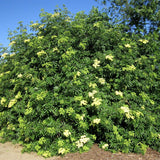Sambucus caerulea (Blue Elderberry)
Sambucus caerulea (Blue Elderberry) is a deciduous shrub or small tree native to western North America. It is known for its clusters of dark blue or purple berries, which are valued for their culinary uses and medicinal properties.
Blue Elderberry typically grows to a height of 10 to 30 feet (3 to 9 meters) and has a multi-stemmed, spreading habit. The shrub features pinnately compound leaves with 5 to 9 serrated leaflets that are green in color. The foliage provides a lush backdrop for the flowers and berries.
During late spring to early summer, Blue Elderberry produces large, flat clusters of small white flowers. The flowers are highly attractive to pollinators, such as bees and butterflies, and add beauty to the landscape. They are followed by clusters of small berries that ripen to a dark blue or purple color.
The berries of Blue Elderberry are edible and are often used in culinary preparations, including jams, jellies, pies, and syrups. They have a tart flavor that becomes sweeter when cooked. It's important to note that the berries should be cooked before consumption, as the raw berries may cause stomach discomfort.
In addition to its culinary uses, Blue Elderberry has a history of traditional medicinal use. The berries and flowers are believed to have immune-boosting and antioxidant properties. They have been used in herbal remedies for cold and flu symptoms, as well as for their potential anti-inflammatory effects.
When planting Blue Elderberry, it's important to note that it is dioecious, meaning it has separate male and female plants. To ensure berry production, it is recommended to have both male and female plants in proximity for cross-pollination.
Blue Elderberry is a valuable addition to native gardens, naturalized areas, and wildlife habitats. Its attractive flowers, edible berries, and ability to support wildlife make it a popular choice for those seeking a versatile and beneficial shrub.
Please note that while Blue Elderberry has culinary and medicinal uses, it's important to exercise caution and consult reliable sources or experts when using any plant for medicinal purposes.
Botanical Name : Sambucus caerulea
Common Name : Blue Elderberry
Height : 20-30 ft
Spread : 20- 30 ft
Germination Info : Seed requires 30-60 days warm stratification followed by 90-120 cold
Hardiness zone : 5-8
Average seed per ounce : Approx. 8750

